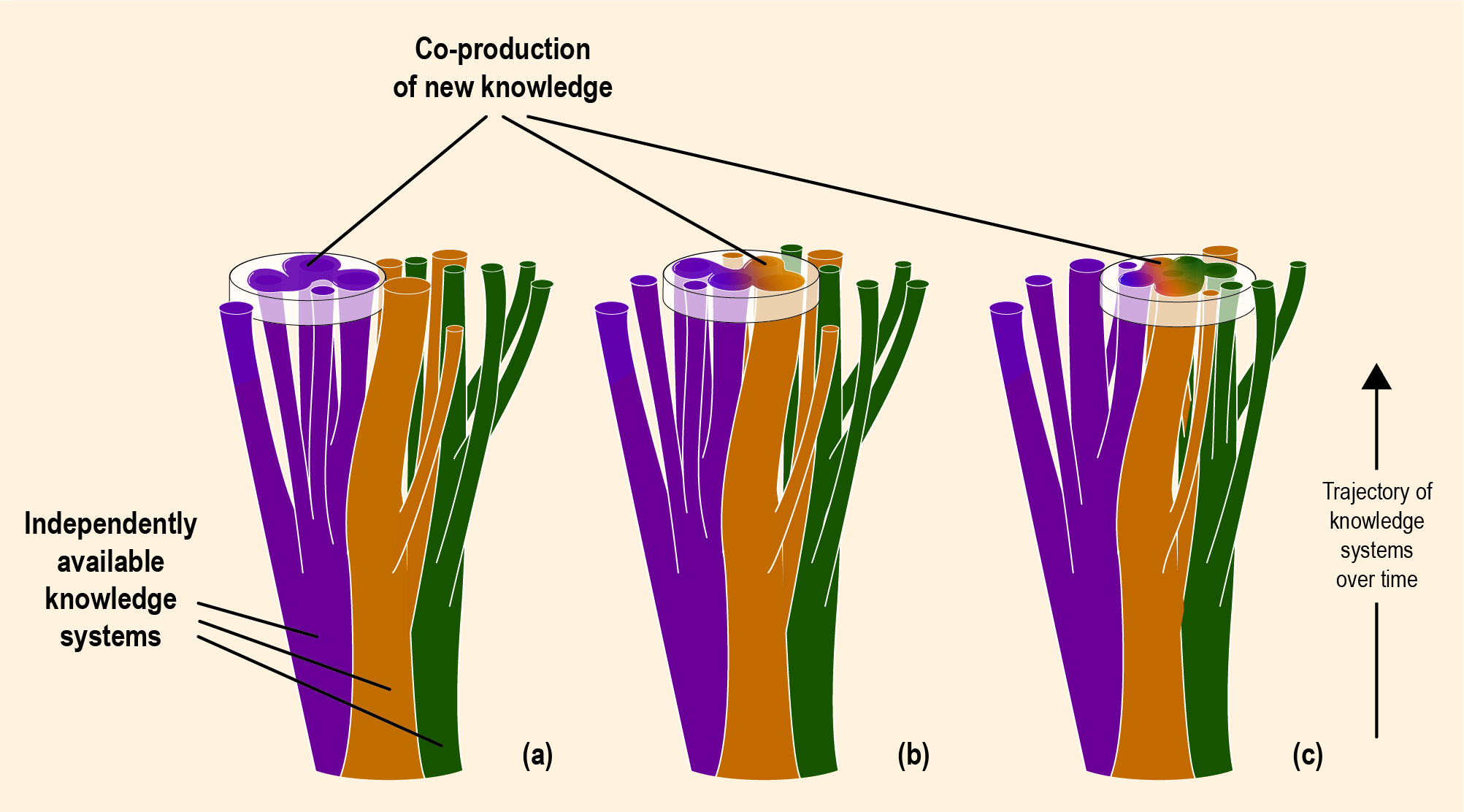
Figure CB4.1
Figure CB4.1 | Knowledge co-production using scientific knowledge, Indigenous knowledge (IK) and/or local knowledge (LK) to create new understandings for decision making. Panels A, B, and C represent the use of one, two, and three knowledge systems, respectively, illustrating co-production moments in time (collars). Panel A represents a context which uses one knowledge system, for example, of IK used by Indigenous peoples; or of LK used by farmers, fishers and rural or urban inhabitants; or of scientific knowledge used in contexts where substantial human presence is lacking. Panel B depicts the use of two knowledge systems, as described in this Cross-Chapter Box in the case of Bowhead whale population counts and in Himalayan flood management. Panel C illustrates the use of all three knowledge systems, as in the Pacific case in this Cross-Chapter Box. Each collar represents how making use of knowledge from different systems is a matter of both identifying available knowledge across systems and of knowledge holder deliberations. In these processes, learning takes place on how to relate knowledge from different systems for the purpose of improved decisions and solutions. Knowledge from different systems can enrich the body of relevant knowledge while continuing independently or can be combined to co-produce new knowledge.